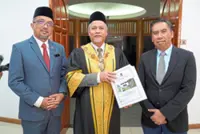
Taman Sri Muda in Seksyen 25 Shah Alam was among the worst hit flood areas in December 2021. – IZZRAFIQ ALIAS/The Star
FLOODS caused some RM6.1bil in losses nationwide in 2021, according to the Department of Statistics Malaysia (DOSM). This included damage to homes, vehicles, business premises, agriculture, factories and public assets/infrastructure.
The losses to the latter (electrical systems, roads, bridges, drains, public buildings, etc) were the biggest of all categories at RM2bil (33%), while damage to homes was RM1.6bil (26%).
Save 30% and win Bosch appliances! More Info








































